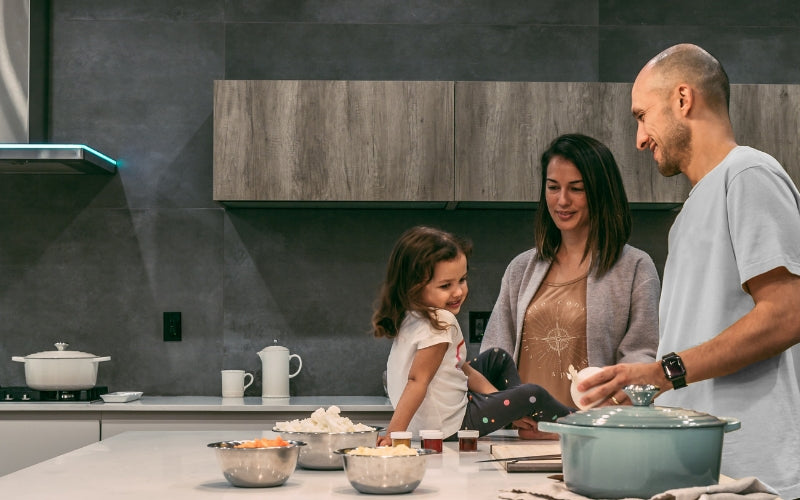How to Get Your Littlies to Eat
Children can be notoriously picky eaters. From cutting their sandwiches in the ‘right’ way, to loving one food on a Tuesday but hating it on a Wednesday and choosing the correctly-patterned plate… parents sure do have their work cut out for them when it comes to patience and getting their offspring to eat a healthy and balanced diet!

Picky Eating
Most toddlers are picky eaters. This is one area of their life where they can exert some control. By refusing to eat, children are practising their independence and asserting themselves in a world where they sometimes have no say. It’s our job as parents to provide healthy food choices and teach good eating habits which will last them right into adulthood.
Picky eating is typical toddler behaviour. If your child shows any of the following behaviours, rest assured that he or she is completely normal!
- Refusing a food based on colour or texture
- Choosing a few foods and eating nothing but those
- Being unwilling to try anything new
- Losing interest in a food they used to love
- Only wanting to feed themselves with a spoon/fork/hands
Yes, we’re afraid to say that if you are a parent or guardian of little people then you’ll know only too well the mealtime struggles that can ensue.
But how can you help your little one to safely navigate the world of food? How can you teach your children to create healthy habits and exert patience all at the same time?! We’re dedicated to making your job as a parent a little easier, so hopefully this guide to helping your children eat healthily will provide some inspiration!
How to Introduce Healthy Eating Habits in 8 Easy Steps
1) Help Your Child Become Involved
If you involve your child at every step of the food preparation process you’ll find that they will become more engaged and interested in food as a whole, leading to better eating habits. When you are shopping let your child help to choose the fruit/vegetables you need and talk to them about the colours, textures and smell of each of the foods you are choosing, together. Find ways to let your child help with preparing the meals- from laying the table, to washing the salad and (age-appropriate) help with cutting/mashing/peeling - anything you can do to make your child become more involved at mealtimes will lead to a healthy interest in food as a whole.

2) Don’t Overload the Plate
It’s important not to overload your child’s plate as it can lead to them being overwhelmed which will put them off trying anything on the plate at all. A good rule of thumb is to offer one teaspoon of each type of food (meat, veggies, carbs) per your child’s age. So 3 teaspoons of carrots for your 3-year old and 1 teaspoon of chicken for your 1-year old. It’s important to remember that their tummies are so much smaller than ours and they need a lot less food than you’d imagine. By following the rule ‘less is more’ you’ll give your child a chance to ask for more and they will feel achieved when they have finished their plates which leads to a positive relationship with mealtimes.
3) Make it Fun
Making mealtimes fun and interesting is key to nurturing a healthy relationship to food. Ask your child to help design the bespoke name labels for lunchboxes, drinks bottles and snacks (they can choose the colour/design and font) to help them feel empowered and excited about their lunch! Our small name labels are made from a high grade vinyl that will stick to most clean smooth surfaces making them ideal for lunch boxes and drink bottles. They are also dishwasher and microwave safe which means they are even useful for naming plates and other high-usage items. Why not separate your child’s favourite plate/dish into sections and label each quarter ‘meat/veg/grains/carbs’ to help teach your child about the main food groups? Anything you can do to make mealtimes more fun and educational will engage your child and make them more likely to eat!

4) Appropriate Snacking
Whether via breast or bottle, you will have been used to giving your child regular meals/snacks in the form of milk since they were born so it will feel natural to give them regular snacks once you start weaning. However it’s important to remember that, whilst regular 2-3 healthy snacks a day are necessary for little ones, too much snacking as they get older can fill them up so they have no appetite for proper meals. If the meal is in the next hour, avoid offering your child a snack. If your child comes to the table hungry, he or she is more likely to eat the meal.It’s obvious that the meal you’ve lovingly prepared will go uneaten if they have been snacking on fruit, crackers, cheese and raisins for the most part of the day! Don’t be tempted to give your child snacks to replace meals they haven’t eaten either or they’ll become wise and avoid meals knowing that they have a snack to look forward to afterwards!
5) Offer Choices
Offering your child a choice to give them back some control is often a good way of making them eat. For example asking them “would you like broccoli or cauliflower?” or “shall we have pasta or potatoes tonight?” often makes them more interested at dinner time which will encourage a good relationship with food. Getting them interested and excited about food rather than making it a battle of wills will be a good foundation for healthy (stress-free) mealtimes. Don’t however be tempted to overwhelm them with choices or your child may feel overly-burdened. A simple choice between A and B (and not letting them determine C, D, E and F!) is all it takes to hopefully create a smooth dinner for all.

6) Give Your Child Good Notice
If you suddenly summon your child and drag them away from something they were playing/making/doing without warning, then understandably they can become perturbed and unwilling to join you at the dinner table. If you give them a 15 minute warning, followed by a 5 minute warning that it’s time to pack away and get ready for dinner (as well as asking them to help lay the table etc), they can mentally prepare for mealtimes and not feel unduly interrupted. Children may be so tired or excited from play activities that they don’t feel like eating so letting them know that it is almost time for a meal will give them a chance to transition into a happier mealtime.
7) Be Strict About Distractions at Mealtimes
Don’t let your child play with toys or become distracted by outside influences during mealtimes such as reading books or watching TV. Explain to your child how good it is to eat together as a family and lead by example (put your phones away!) by engaging in discussions about how everyone’s day has been. It’s also good practice to get your children to stay at the table until everyone has eaten so that they don’t rush through meals or say they’re full in order to get back to the book they were reading/toy they were playing with. Mealtimes should, as much as possible, be seen as an important time for the family to reconnect and this will make it enjoyable and encourage children to have a healthy attitude towards eating.
8) Teach the Importance of Knowing When You’re Full
Many of us will remember being forced to finish our plates as children, but this is a dangerous way of eating that could lead to an unhealthy relationship with food. It’s very important to teach the importance of knowing when you’re full so that you don’t overeat or feel obliged to continue eating when your body has had enough. Making children eat when they’re not hungry can interfere with their natural internal cues that tell them when they’ve had enough. Allowing them to choose when to stop eating teaches them how to listen to their body and make healthy food choices.

Talk to your doctor if you have any concerns about how your child is growing or if you are concerned that picky eating is slowing your child’s growth. If your child demonstrates pain or discomfort after eating, or they become constipated or similar, it’s important that you see a doctor to see if there’s a deeper reason why your child doesn’t like certain foods. If an allergy or intolerance presents itself you can make sure caregivers are made aware of this by using allergy warning labels which will give you added peace of mind that an allergy won’t go unnoticed when you’re not around to supervise.



